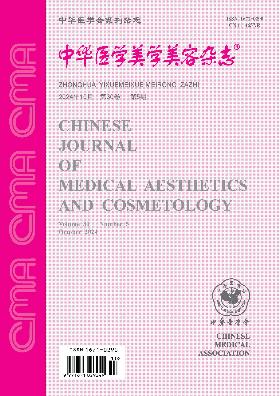计算机辅助设计制造髂嵴血管皮瓣修复下颌骨缺损的效果
引用次数: 0
摘要
目的探讨计算机数字外科辅助设计制作在带血管髂骨瓣修复下颌骨缺损中的临床应用及效果。方法采用CT扫描下颌成釉细胞瘤患者颅面颌面区域,采用计算机化数字外科辅助设计重建颌面部骨骼三维模型,模拟局部切除及髂骨瓣重建下颌缺损。采用3D打印技术制备手术指南,辅助病灶切除和骨重塑。术后进行临床及CT检查,观察患者面部外观及咬合关系的恢复情况、创面愈合及移植物存活情况。结果术后复查,植骨成活良好,吻合骨形成。手术部位的伤口愈合了。经临床及CT检查均未见肿瘤复发。颌面部外观恢复良好,残牙合关系恢复良好。结论采用计算机数字化手术辅助设计结合3D打印技术,可有效简化下颌节段缺损修复重建,优化术后修复效果。关键词:图像处理;计算机辅助设计与制造;髂骨;对于;下颌缺陷本文章由计算机程序翻译,如有差异,请以英文原文为准。
Effects of computer aided design and manufacture for reconstruction of mandibular defect with vascularied iliac crest flap graft
Objective
To evaluate the clinical application and effect of computerized digital surgical assisted design and manufacture for reconstruction of mandibular defect with vascularied iliac crest flap graft.
Methods
CT was used to scan the craniofacial and maxillofacial region of mandibular ameloblastoma patient, and then the 3D model of the maxillofacial skeleton was reconstructed using the computerized digital surgical aid design to simulate the focal resection and the mandibular defect reconstruction with the iliac crest flap. Surgical guides were prepared by 3D printing to assist focal resection and bone reshaping. Postoperatively, clinical and CT examinations were performed to observe the restoration of the patient's facial appearance and occlusal relationship, as well as wound healing and graft survival.
Results
Postoperative review results showed that the bone graft survived well, and the anastomosed bone was formed. The wound in the surgery area healed. No recurrence of the tumor was found after clinical and CT examination. The maxillofacial appearance was well restored, and the residual occlusal relationship recovered well.
Conclusions
The use of computerized digital surgical aided design combined with 3D printing technology can effectively simplify the mandibular segmental defect repair and reconstruction and optimize the postoperative repair effect.
Key words:
Image processing; Computer-aided design and manufacture; Ilium; Myocutaneous flap; Mandibular defect
求助全文
通过发布文献求助,成功后即可免费获取论文全文。
去求助
来源期刊
自引率
0.00%
发文量
4641
期刊介绍:
"Chinese Journal of Medical Aesthetics and Cosmetology" is a high-end academic journal focusing on the basic theoretical research and clinical application of medical aesthetics and cosmetology. In March 2002, it was included in the statistical source journals of Chinese scientific and technological papers of the Ministry of Science and Technology, and has been included in the full-text retrieval system of "China Journal Network", "Chinese Academic Journals (CD-ROM Edition)" and "China Academic Journals Comprehensive Evaluation Database". Publishes research and applications in cosmetic surgery, cosmetic dermatology, cosmetic dentistry, cosmetic internal medicine, physical cosmetology, drug cosmetology, traditional Chinese medicine cosmetology and beauty care. Columns include: clinical treatises, experimental research, medical aesthetics, experience summaries, case reports, technological innovations, reviews, lectures, etc.

 求助内容:
求助内容: 应助结果提醒方式:
应助结果提醒方式:


